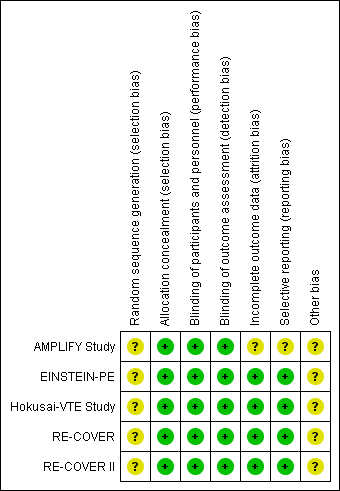Related content
Related reviews and protocols
Meixuan Li, Jing Li, Xiaoqin Wang, Xu Hui, Qi Wang, Shitong Xie, Peijing Yan, Jinhui Tian, Jianfeng Li, Ping Xie, Kehu Yang, Liang Yao | 14 April 2023
Xiaoqin Wanga, Yanfang Maa, Xu Hui, Meixuan Li, Jing Li, Jinhui Tian, Qi Wang, Peijing Yan, Jianfeng Li, Ping Xie, Kehu Yang, Liang Yao | 14 April 2023
Anne WS Rutjes, Ettore Porreca, Matteo Candeloro, Emanuele Valeriani, Marcello Di Nisio | 18 December 2020
Marcello Di Nisio, Iris M Wichers, Saskia Middeldorp | 25 February 2018
Carlos A Salazar, German Malaga, Giuliana Malasquez | 14 April 2010
Raza Alikhan, Rachel Forster, Alexander T Cohen | 7 May 2014
Shahab Hajibandeh, Shahin Hajibandeh, George A Antoniou, James RH Scurr, Francesco Torella | 21 November 2017
Alina Andras, Adriano Sala Tenna, Marlene Stewart | 24 July 2017
Tim Young, Krishna Bajee Sriram | 7 October 2020
Susan R Kahn, David R Morrison, Gisèle Diendéré, Alexandre Piché, Kristian B Filion, Adi J Klil‐Drori, James D Douketis, Jessica Emed, André Roussin, Vicky Tagalakis, Martin Morris, William Geerts | 24 April 2018













